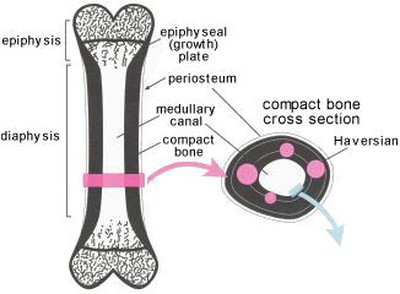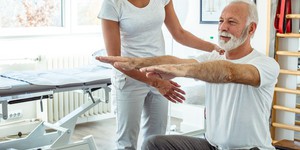Abstract
Physical activity is needed for maintaining normal bone strength and mass. Can physical stress on finger bones during development lead to an increase in finger length? Check out this project to see how violin players are an example of a "natural experiment" that you can use to answer this question.Summary
Andrew Olson, Ph.D., Science Buddies
Sources
This project is based on:
- Wang, Y.H.S., 2004. The Fingers of Isaac Stern: Will Constant Stress Affect the Development of Phalanges? California State Science Fair Abstract. Retrieved August 17, 2006.

Objective
The goal of this project is to determine if stress exerted on fingers when playing a stringed musical instrument can result in an increase in length of the finger bones.
Introduction
You know from experience that animal bones are hard, strong, and durable. If you've handled bones from a dead animal, you've seen for yourself the hard matrix of hyrdoxyapatite (crystalized calcium salts) and secreted proteins that living bone cells leave behind. It may be hard to imagine, but in living bone, cells called osteoblasts and osteoclasts are continually building and breaking down bone tissue, in a constant process of remodelling. In juvenile animals, the bones are growing to support the growth of the animal, but in adults, the constant breakdown and rebuilding process still continues.
Bone development can be influenced by nutrition, exercise, hormones, and exposure to sunlight. Sunlight is important for the production of vitamin D, which is needed for calcium absorption.
"In long bones, the growth and elongation (lengthening) continue from birth through adolescence. Elongation is achieved by the activity of two cartilage plates, called epiphyseal plates, located between the shaft (the diaphysis) and the heads (epiphyses) of the bones (Figure 1). These plates expand, forming new cells, and increasing the length of the shaft. In this manner, the length of the shaft increases at both ends, and each head of the bone moves progressively apart. As growth proceeds, the thickness of the epiphyseal plates gradually decreases and this bone lengthening process ends. In humans, different bones stop lengthening at different ages, but ossification is fully complete by about age 25. During this lengthening period, the stresses of physical activity result in the strengthening of bone tissue." (Lujan and White, date unknown)
 Image Credit: Lujan and White / Copyrighted
Image Credit: Lujan and White / CopyrightedHuman bones have growth plates near the end of each bone called the epiphy seal. Near the end of the bone is also epiphy sis and the center of the bone is made up of a diaphy sis, periosteum, medullary canal, compact bone and haversian.
Figure 1. Long bones continue to grow and elongate (lengthen) through adolescence. This process is called ossification. (Lujan and White, date unknown)
"In contrast to the lengthening of bone, the thickness and strength of bone must continually be maintained by the body. That is, old bone must be replaced by new bone all the time. This is accomplished as bone is continually deposited by osteoblasts, while at the same time, it is continually being reabsorbed (broken down and digested by the body) by osteoclasts. Osteoblasts are found on the outer surfaces of the bones and in the bone cavities. A small amount of osteoblastic activity occurs continually in all living bones (on about 4% of all surfaces at any given time) so that at least some new bone is being formed constantly. Normally, in fact, except in growing bones, the rates of bone deposition and absorption are equal to each other so that the total mass of bone remains constant." (Lujan and White, date unknown)
This project takes advantage of a "natural experiment" on stress and bone development. Violinists (and other string players) exert stress on the fingers of their left hands as they finger the strings to produce different notes. Does this increased stress result in increased bone growth in the fingers of the left hand?
Terms and Concepts
To do this project, you should do research that enables you to understand the following terms and concepts:
- osteoblasts,
- osteoclasts,
- hydroxyapatite,
- collagen,
- matrix.
- What is the function of osteoblasts in normal bone development?
- What is the function of osteoclasts in normal bone development?
- How does physical stress affect bone development? What is the evidence for effects of stress?
Bibliography
- To get started researching the normal processes of bone development, see:
- Wikipedia contributors, 2006. Bone, Wikipedia, The Free Encyclopedia. Retrieved August 17, 2006.
- Here is an Excel tutorial to get you started using a spreadsheet program:
Excel Easy. (n.d.). Excel Easy: #1 Excel tutorial on the net. Retrieved June 11, 2014. - This website has descriptions and calculators for several statistical tests, including the Student's t-test that you can use in this project to calculate the statistical significance of your results:
Kirkman, T., date unknown. "Student's t-Tests," Department of Physics, College of St. Benedict & St. John's University. Retrieved August 17, 2006.
Materials and Equipment
To do this experiment you will need the following materials and equipment:
-
volunteers:
- violinists and age-matched non-musicians,
- ideally 50–100 participants for each group (see the Science Buddies resource, How Many Participants Do I Need?),
- metric ruler for measuring finger lengths,
- calculator or computer with spreadsheet program for analyzing results.
Experimental Procedure
Note: There are special considerations when designing an experiment involving human subjects. ISEF-affiliated fairs often require an Informed Consent Form for every participant who is questioned or observed. In all cases, the experimental design must be approved by the fair's scientific review committee (SRC) prior to the commencement of experiments or surveys. Please refer to the ISEF rules for additional important requirements for studies involving human subjects: https://www.sciencebuddies.org/science-fair-projects/competitions/human-subjects-regulations.
-
You will need to write a short survey to determine the playing history of each of your volunteers, in order to assign them to the "violinist" or "non-violinist" group. Your survey should gather the following information:
- musical instrument(s) played,
- hours/week practicing,
- age at which the instrument was taken up,
- age now,
- handedness (for playing),
- gender.
- You should also inquire about non-musical activities that might regularly stress the fingers: e.g., typing on keyboard, or dribbling a basketball.
- You might consider including a question on practice history (hours/week for each year of playing).
- Measure and record the length of the fingers (index, middle, ring, and pinky) for both hands.
-
Calculate the difference in length between fingers of left hand and fingers of right hand for each individual. If you know how to use a spreadsheet program, it will be very helpful for the analysis. If you don't know how, this would be a good opportunity to learn about spreadsheets.
left index right index index
difference
(left − right)left middle right middle middle
difference
(left − right)etc.
- For each pair of fingers, calculate the average difference in length and the standard deviation for the violinist group and for the control group. Do violinists differ from the control group?
- Does playing a violin put more stress on the fingers than playing, for example, a clarinet? Can you think of a way to measure the force exerted by the fingers in each case?
- More advanced students should use a Student's t-test to determine if any differences found between the experimental and control groups are statistically significant.
Ask an Expert
Variations
- How about other string players: e.g., violists, cellists, guitarists? Is there a difference in the length of the finger bones between the two hands?
- You could also investigate the effects of age. The lengthening process ends for different bones at different ages, but is generally complete by age 25 (Lujan and White, date unknown). Ask your doctor when finger bones stop growing. See if you can find a group of string players who took up their instruments in adulthood. Do they show a difference in finger length between their two hands?
- If stress from fingering the strings stimulates bone elongation, then you might expect to find a correlation between hours practiced and finger length. Do you find such a correlation?
Careers
If you like this project, you might enjoy exploring these related careers:










